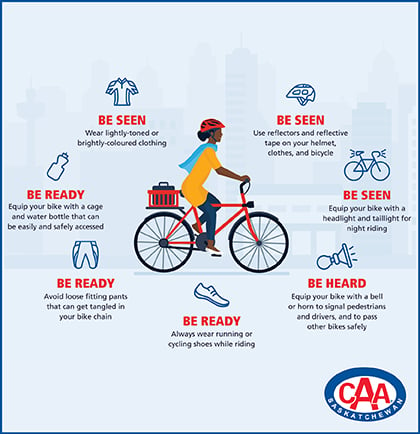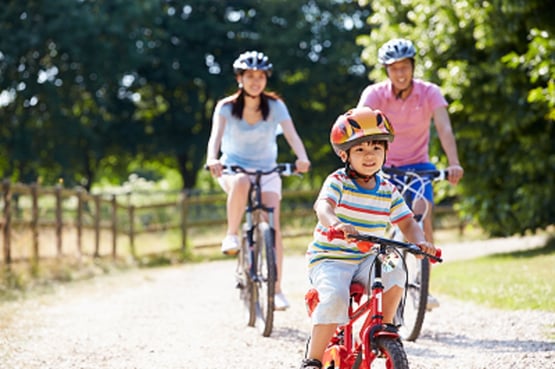Every year, nearly 7,500 cyclists across Canada are seriously injured. Even more surprising than the “how many” is the “where” cyclists get hurt or killed. Unfortunately, it’s usually at an intersection with existing traffic signals or signs.
Add to that the COVID factor: During the pandemic last year, bike sales skyrocketed with people seeming to buy them as quickly as they stocked up on home essentials.
According to a 2020 poll conducted by CAA, a third of Canadians cycled more often than the previous year. The result is roads flooded with cyclists and increased potential for collisions with automobiles.
We can be drivers one day and cyclists the next, which is why it’s important that we share the road to keep everyone safe.
Safe driving 101
- Be aware of your surroundings by paying attention and making eye contact with other road users including cyclists, drivers, and pedestrians.
- Avoid driving distracted which means no headphones or use of mobile devices when you’re behind the wheel.
- Always shoulder check and use your signal lights to communicate your intentions with other road users.
- Drive according to the posted speed limits, including near school zones, parks, and playgrounds.
- Be courteous.
- Road-sharing tips with cyclists are available at ca/bikesafety.
Safe cycling 101
- Wear a properly fitted bike helmet.
- Ride with two hands on the handlebar and don’t cycle distracted. Put headphones and mobile devices away.
- Know and obey the rules of the road.
- Use hand signals to communicate your intentions with other road users.
- Be courteous.
- Take CAA’s Road Test to learn how to share the road safely with drivers.
CAA’s three Bs of bike safety
- Be Ready
- Be Seen
- Be Heard

Bike maintenance and care
Before you ride your bike, make sure it functions properly. Remembering your ABC’s will get you out on the road safely and confidently.

- A is for Air: Check your tires to ensure they are properly inflated with air and that they are not worn, cracked, or gouged.
- B is for Brakes, Bar & Bell: Squeeze the brake levers of your handlebar brakes to make sure they are working. Check the brake pads for wear and tear. Set your handlebar to the correct height. You should be able to ride comfortably without strain on your back, shoulders, or wrists. Test your bell so you will be able to signal others easily.
- C is for Chain & Crank: Ensure the chain is well oiled and secure so that it does not slip from the gears. Test the crank of your bike by running it through its gears. Ensure you can shift gears easily and cleanly. If any of these things are not correctly working, visit your local bicycle shop to have repairs made.
A family affair

Teaching bike safety at a young age helps kids develop good habits behind the handlebars. CAA’s online Road Test helps parents and guardians understand basic safety skills kids need to learn, such as hand signals and how to enter the road from a driveway.
Getting your kids involved will help them ride as safely as possible when out on their own. Basic practices, like making eye contact with drivers and not riding in a driver’s blind spot, can prevent them from becoming another cycling statistic. Learn more, caask.ca/bikesafety
Ride with CAA Got a flat or a broken chain and your bike can’t be fixed on the spot? CAA’s got you covered with Bike Assist = it’s roadside assistance for your bicycle.

.jpg)
